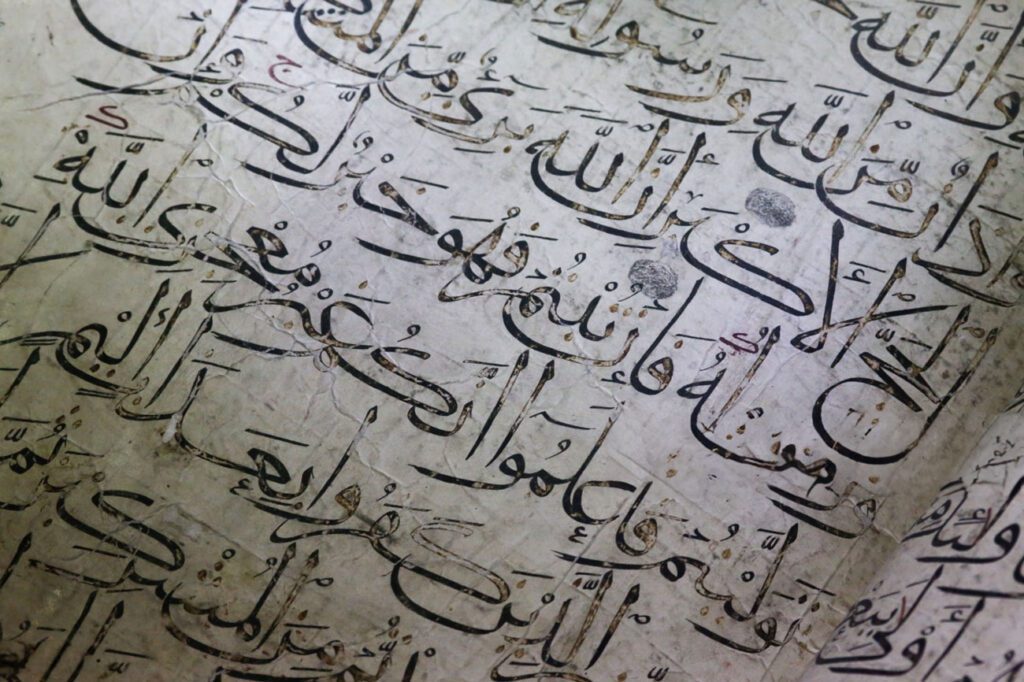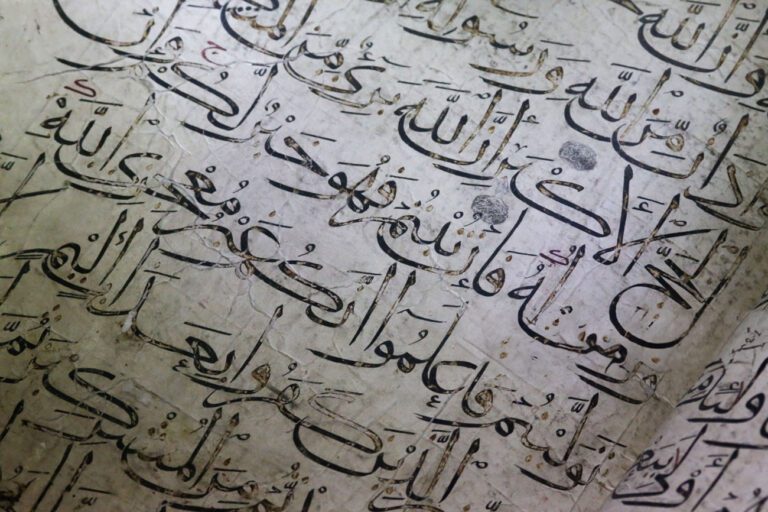
AArabic is an official language of 26 states and one disputed territory, the third most after English and French,[17] one of six official languages of the United Nations,[18] and is the liturgical language of Islam.[19] Arabic is widely taught in schools and universities around the world and is used to varying degrees in workplaces, governments and the media.[20] During the Middle Ages, Arabic was a major vehicle of culture, especially in science, mathematics and philosophy. As a result, many European languages have also borrowed many words from it. Arabic influence, mainly in vocabulary, is seen in European languages—mainly Spanish and to a lesser extent Portuguese, Catalan, and Sicilian—owing to both the proximity of European and the long-lasting Arabic cultural and linguistic presence, mainly in Southern Iberia, during the Al-Andalus era. The Maltese language is a Semitic language developed from a dialect of Arabic and written in the Latin alphabet.[21] The Balkan languages including Greek and Bulgarian have also acquired, through contact with Ottoman Turkish, a significant number of vocabulary of Arabic origin.
Arabic has influenced many other languages around the globe throughout its history
Especially languages of Muslim cultures and countries that were conquered by Muslims. Some of the most influenced languages are Persian, Turkish, Hindustani (Hindi and Urdu),[22] Kashmiri, Kurdish, Bosnian, Kazakh, Bengali, Malay (Indonesian and Malaysian), Maldivian, Pashto, Punjabi, Albanian, Armenian, Azerbaijani, Sicilian, Spanish, Greek, Bulgarian, Tagalog, Sindhi, Odia[23]Hebrew and Hausa and some languages in parts of Africa, such as Somali and Swahili. Conversely, Arabic has borrowed words from other languages, including Aramaic as well as Hebrew, Latin, Greek, Persian and to a lesser extent Turkish, English, French, and other Semitic languages.
Arabic is spoken by as many as 380 million speakers, both native and non-native, in the Arab world,[1] making it the fifth most spoken language in the world,[24] and the fourth most used language on the internet in terms of users.[25][26] It also serves as the liturgical language of more than 1.9 billion Muslims.[27] In 2011, Bloomberg Businessweek ranked Arabic the fourth most useful language for business, after English, Standard Mandarin Chinese, and French.[28] Arabic is written with the Arabic alphabet, which is an abjad script and is written from right to left, although the spoken varieties are sometimes written in ASCII Latin from left to right with no standardized orthography.
Further information: Classification of Arabic languages
Arabic is usually classified as a Central Semitic language. Linguists still differ as to the best classification of Semitic language sub-groups.[29] The Semitic languages changed significantly between Proto-Semitic and the emergence of Central Semitic languages, particularly in grammar. Innovations of the Central Semitic languages—all maintained in Arabic—include:
- The conversion of the suffix-conjugated stative formation (jalas-) into a past tense.
- The conversion of the prefix-conjugated preterite-tense formation (yajlis-) into a present tense.
- The elimination of other prefix-conjugated mood/aspect forms (e.g., a present tense formed by doubling the middle root, a perfect formed by infixing a /t/ after the first root consonant, probably a jussive formed by a stress shift) in favor of new moods formed by endings attached to the prefix-conjugation forms (e.g., -u for indicative, -a for subjunctive, no ending for jussive, -an or -anna for energetic).
- The development of an internal passive.
There are several features which Classical Arabic, the modern Arabic varieties, as well as the Safaitic and Hismaic inscriptions share which are unattested in any other Central Semitic language variety, including the Dadanitic and Taymanitic languages of the northern Hejaz. These features are evidence of common descent from a hypothetical ancestor, Proto-Arabic.[30][31] The following features of Proto-Arabic can be reconstructed with confidence:[32]
- negative particles m * /mā/; lʾn */lā-ʾan/ to Classical Arabic lan
- mafʿūl G-passive participle
- prepositions and adverbs f, ʿn, ʿnd, ḥt, ʿkdy
- a subjunctive in –a
- t-demonstratives
- leveling of the –at allomorph of the feminine ending
- ʾn complementizer and subordinator
- the use of f– to introduce modal clauses
- independent object pronoun in (ʾ)y
- vestiges of nunation
Lighten up trees, carol singers, screaming market traders, combined with the cold crisp air and mouth watering food smells, create a festive and seasonal utopia for those all around.
Embedded within this joy, are shops all around tailored for everyone. Stemming from local independent traders and large brand names across the world.
Offering up to 50% off of selected items, stores across the UK including London will draw people in there millions to devour bargains, whether it be fore themselves or somebody else.

On the other hand, several Arabic varieties are closer to other Semitic languages and maintain features not found in Classical Arabic, indicating that these varieties cannot have developed from Classical Arabic.[33][34] Thus, Arabic vernaculars do not descend from Classical Arabic:[35]Classical Arabic is a sister language rather than their direct ancestor.[30]


Arabic Language
AArabic is an official language of 26 states and one disputed territory, the third most after English and French,[17] one

online learning important?
Online learning continues to surge in popularity, not just because of us all staying at home more. Several factors play